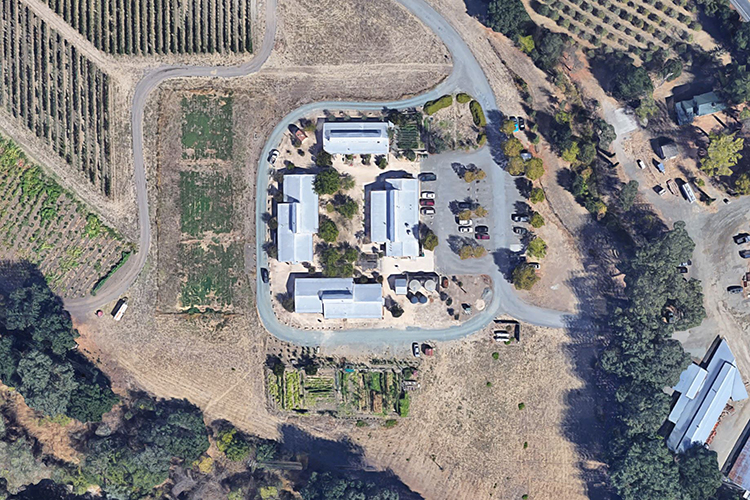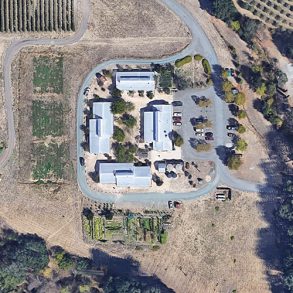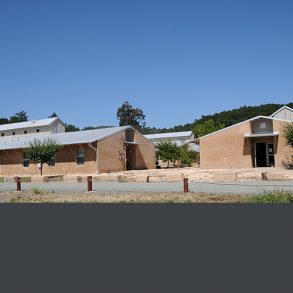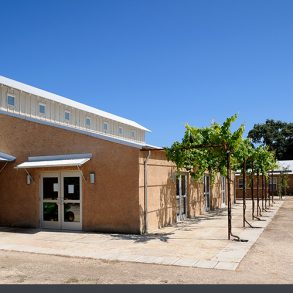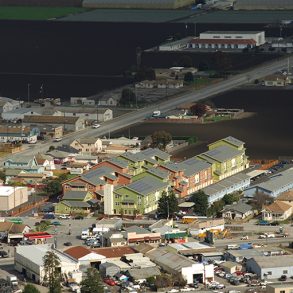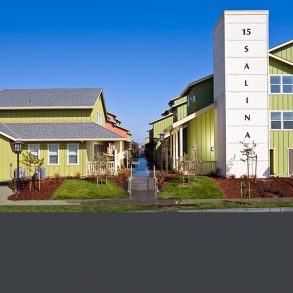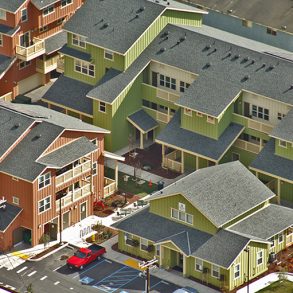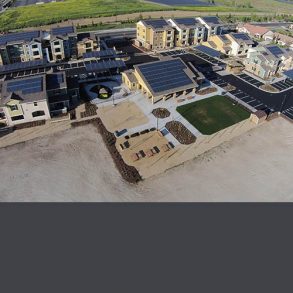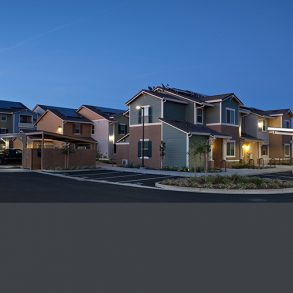River Ranch Farmworker Housing Center
Napa Valley, California
Brandenburger Taylor Lombardo Architects
2002
Housing for migrant workers is a critical need in Napa Valley, as workers who journey to Napa seasonally often have nowhere to stay and resort to tents, churches, and cars for shelter. Don Brandenburger, AIA, who had done a great deal of work for Napa’s winemakers, worked with alongside Joseph Phelps Chairman Bill Phelps, longtime immigrants and workers’ rights advocate Father John Brenkle, and others to design the River Ranch Farmworker Housing Center on a pro bono basis.

Constructed on five acres of producing vineyard land donated by Joseph Phelps Vineyards, the four-building complex offers 60 beds, 2 meals a day, and recreational facilities to farmworkers for $13/day. The Housing Center now stands as an example for the Napa community as an economical, climate-appropriate housing solution for the influx of farmworkers during the harvest seasons.
Nuevo Amanecer
Pajaro, California
KTGY Group, Inc.
2006
Nuevo Amanecer is the result of collaboration among nonprofit, government, community advocacy and private and public funding organizations. KTGY Group worked withSouth County Housing Corporation, the residents, and the County of Monterey to design apartments with parking on the ground level and two additional stories of townhouse and flat style apartments above the garages. The design process included coordination with Global Green USA to incorporate green building systems and materials. A design charrette outlined potential green building features, and follow-up meetings produced a comprehensive checklist to track and implement the green building goals.
The project involves the redevelopment of three contiguous rundown properties in Pajaro, California, a rural, agricultural community of approximately 3,500 residents in unincorporated Monterey County, just across the Pajaro River from the City of Watsonville. Twenty-six units are restricted to farm worker households. Units in the new development are designed as both flats and townhouses, with a mix of 1, 2, 3, and 4 bedroom apartments. The project features a 1,500 sq. ft. community center with a computer room and space for health and education services. South County Housing (SCH), the developer, worked with Global Green USA to integrate several green building features into the new buildings, including solar panels to offset the common area energy needs. SCH is responsible for maintenance of the property in perpetuity and provides staff to coordinate resident services including after-school programs, health education, ESL classes, job training, and safety programs.
Mutual Housing at Spring Lake
Woodland, California
Kuchman Architects
2015
Mutual Housing at Spring Lake is the first permanent, year-round housing built for agricultural worker families in Yolo County. It is designed to allow its 62 households to enjoy the benefits of “green living,” often only available to high-income homeowners. As the homes use around the same amount of energy as they produce, utility bills for residents are extremely low. It is the first 100% Zero Net Energy rental housing development in the USA to be certified by the US Department of Energy.
The work to help residents achieve “green living” doesn’t just stop with environmental features. Residents at Spring Lake are also trained in how to use the energy efficient equipment installed in their homes and are involved in learning and sharing ideas on other “green behaviors,” such as recycling and water saving.
Mutual Housing’s work with residents goes well beyond providing energy efficient homes. Through a range of opportunities including leadership development schemes, peer lending circles and digital literacy classes, residents gain skills and confidence. For many, this has opened up new opportunities in education and community life. New leaders have emerged from the community who now work to advocate for the rights of agricultural workers.
Mutual Housing at Spring Lake has received several awards, including a US Department of Energy Housing Innovation Award, a USGBC Green Building Award for Equity, a Sacramento Housing Alliance Housing Innovation Award; and a Green California Summit Green Leadership Award.

